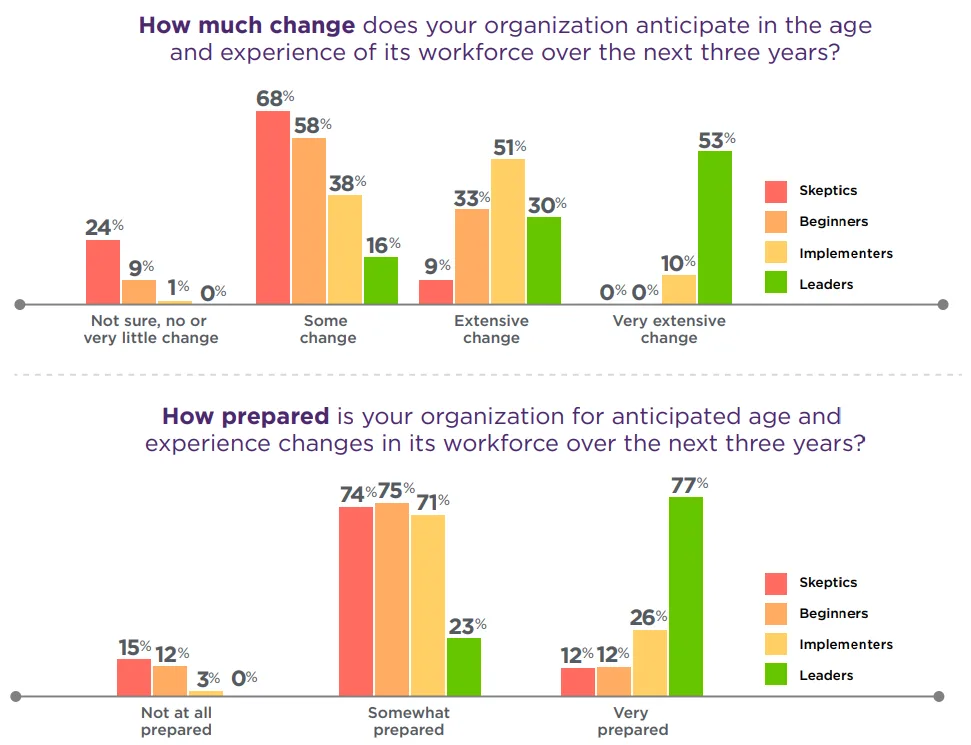How the evolving workplace can help fight climate change
Tech Trends · Aug 20, 2019
We often associate the future with technology. Just think about how our work lives have changed dramatically over the last century. It’s automated much of what used to be manual, back-breaking labour. It’s given us intelligent machines capable of processing information that would take a human several lifetimes, giving us deeper insights we never could have grasped otherwise. In short, it’s created a world far more suited to fulfilling human needs, desires and aspirations.
But technological progress has come at a cost. Today, 97% of scientists agree that human activity, driven largely by our use of technology and energy, is causing a climate and environmental crisis, by pumping greenhouse gasses into the atmosphere. What’s needed is innovation in every sector to become cleaner and greener.
The efficiency of location agnosticism
Perhaps the greenest thing about the evolving workplace is focusing more on the work and less on the place. Having a “location agnostic workplace” is just a fancy way of saying, “where you work is unimportant.” It’s a great example of how technology can help the climate, while also helping workers and businesses.
At least 11.5% of Canadians have a workplace with no fixed location, with 7.4% of Canadians work from home, according to Statistics Canada. From a climate perspective, growing these numbers is a good thing, as much of our fossil fuel use comes from simply commuting to and from work.
From video meeting platforms to cloud collaboration hubs, our existing technology is already making a difference in lessening the strain on the environment. Lessening the need for physical workplaces also decreases a business’s real estate footprint, which in turn can save on lights, heating, and cooling. Enlightened work-from-home policies are empowering employees to bring work and life closer to balance, while increasing productivity for businesses.
Take TELUS, as an example. As published in our annual report,the policies and technologies deployed in our Work Styles program are having a measurable impact toward reducing our carbon footprint. As the report states: “Through this program, we have decreased our environmental footprint by eliminating 18,500 tonnes of carbon dioxide emissions and reducing 2.9 million hours of commuting time in 2018 alone – time that can be spent on more precious endeavours, like engaging with loved ones.”
And that’s just one company using existing technology. Imagine what might happen when the barriers to embracing location workplace agnosticism are torn down even further for everyone.
The coming 5G revolution
We sit on the brink of another massive technological leap forward: 5G. This fifth generation of internet infrastructure is promising tremendous growth in terms of our ability to connect with one-another, enabling a new era of artificial intelligence applications, the Internet of Things (IoT), and even entire smart cities.
In our recently published white paper, we anticipate a ten-fold increase in download speed, from the current ceiling of around 100 megabits per second to 10 gigabits per second, or even higher. If you thought the last ten years saw unprecedented technological disruption, brace yourself!
For example, historically, one of the downsides of using teleconferencing is the inevitable connectivity issues that can occur. We’ve all experienced lost connections, echoing voices, or blurry video - not to mention receiving the infamous “sorry forgot my password have to reset... give me 5 minutes” text message 10 minutes after your meeting was supposed to start.
5G is poised to make such issues a thing of the past (except for the lost password thing. Nothing we can do about that). Who knows? Perhaps even holographic conferences may become just another part of working life? More likely, VR may become commonplace, bringing that personal face-to-face connection missing from so much of our daily working interactions online, while lessening the need to fly from meeting to meeting at the executive level. Air travel alone currently contributes about 859 million tonnes of greenhouse gas emissions each year. If we can make a dent in that with a few VR meetings instead, then technology has made a difference.
Optimization is green
The coming 5G shift will open the door to businesses being able to optimize everything. Already we’ve seen smart buildings and smart meters save energy by intelligently managing heat, light and air conditioning based on need, as opposed to relying on a human to manually adjust these services. But now imagine a fleet of self-driving trucks that always take the most efficient route, can travel at night when fewer people are on the road, and always drive to save fuel? That’s just one kind of greener innovation that will be enabled and made ubiquitous by the 5G network. It’s hard to imagine exactly what innovations will come next and how they’ll impact the workplace, but as automation and optimization continues, we know we’ll see greater productivity gains while using fewer resources. That’s a good thing!
Innovation is inevitable
Investments in technology at work are going to continue to increase. Not just because it’s better for the bottom line and better for the environment. It’s because younger workers are demanding it, especially location agnosticism, and leading businesses need to invest in technology to compete for the best talent. This is according to an IDC study conducted in partnership with TELUS.
The study surveyed ~1000 medium sized businesses in Canada and categorized them into groups: Skeptics, Beginners, Implementers, and Leaders. The categorization is based on a set of criteria that determined their level of openness to new technologies and the changes and opportunities that come with it.
As the report says:
“... Leaders have already anticipated a very extensive shift toward younger employees needing integrated, location-agnostic technology. They report being prepared for very extensive change at a rate three times greater than Implementers and more than six times greater than Beginners and Skeptics.

Credit: IDC
According to IDC, Leader businesses, by virtue of their openness to new policies and technologies like those that enable location agnostic work practices, are not only set to succeed in business, but also set to reduce their carbon footprint. That’s a win-win for business and the environment. But that’s not representative of every business.
Many Canadian businesses - like those who fall into the Skeptic or Beginner categories - are at risk of falling behind on their technological adoption, making them less efficient overall, both economically and environmentally.
As the IDC study reports:
While less than 20% of medium-sized Canadian businesses have adopted physical automation solutions like fleet management, asset management, digital sensors, smart buildings, self-serve checkouts, smart meters and other interconnected computing devices, the Internet of Things (IoT) stands to be a key differentiator between those furthest ahead and those furthest behind in their workplace transformation. Over 50% of Skeptics have zero intention of investing in physical automation, while 53% of Leaders have already adopted at least one physical automation solution.
Conclusion
It’s important to realize that it’s not just individuals and governments who play a role in tackling climate change. In fact, businesses are the key drivers of climate change. As Fortune reported in 2017, just 100 companies are responsible for 71% of global greenhouse emissions. But businesses can be intelligent drivers of innovation. By adopting smart solutions of waste reduction, technology has a role to play in not just creating efficiencies in energy use, but also larger profits in the bottom line. It’s the technological leaders that are set to have the greatest returns on investment, while at the same time, making the biggest contributions to reducing their climate impact. It’s the responsibility of every business to innovate while making the Earth a better place for generations to come.



